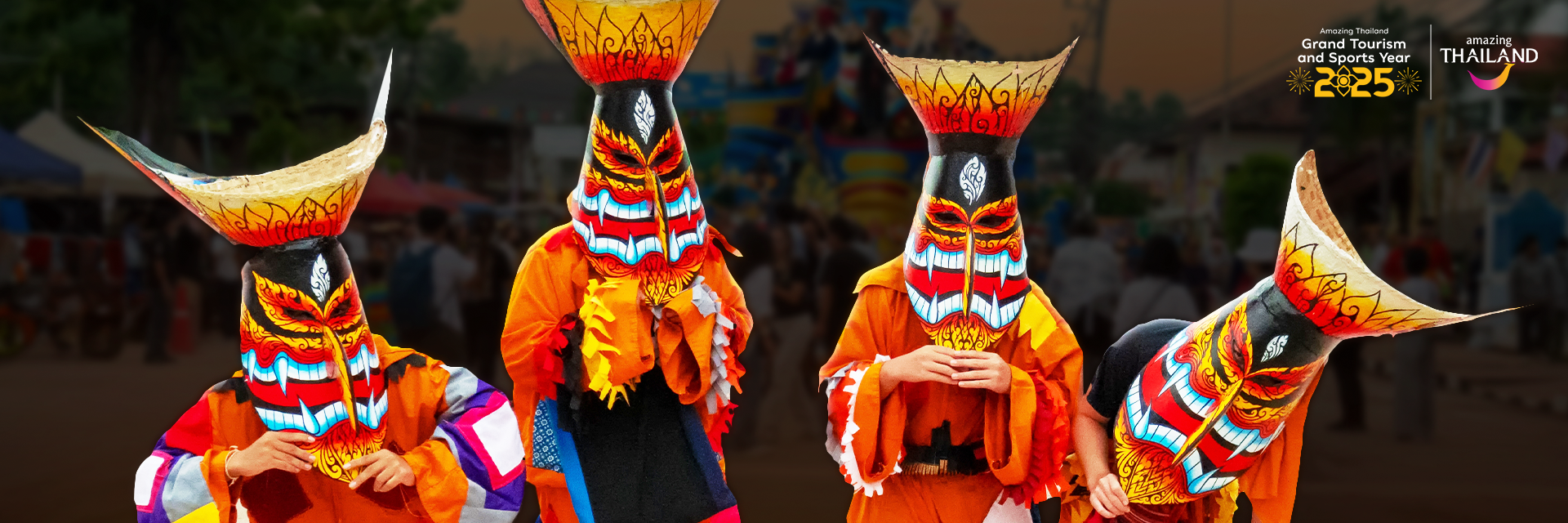The Phi Ta Khon Festival is a renowned tradition of Dan Sai District, Loei Province, consistently attracting numerous tourists. Regarding the origin of the Phi Ta Khon Festival, there are various interwoven stories and beliefs, encompassing both Buddhist and local traditions.
Referencing academic articles on the Phi Ta Khon Festival, it is stated that the Phi Ta Khon performance has become an integrated part of a Buddhist ceremony known as "Bun Luang" (Great Merit-Making Festival). As for the precise origin of the name "Phi Ta Khon," it remains unclear, as there are many local appellations such as "Phi Tam Khon" (ghost following people), "Phi Khon" (mask ghost) "Phi Thon" and "Phi Ta Khon."
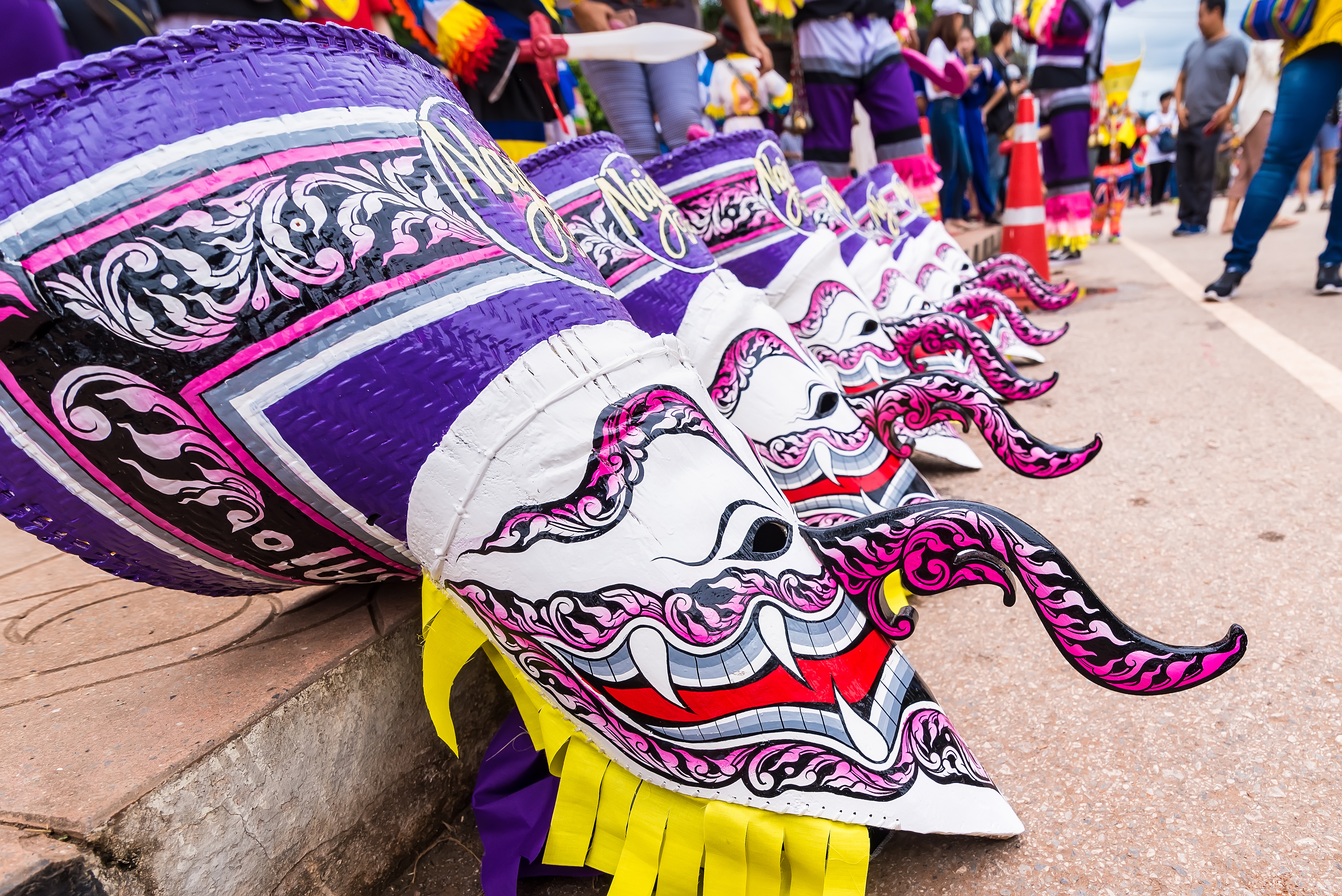
However, all these names convey a ritual performance where masks are a crucial element. The masks used in this festival are painted to look scary, bizarre, and unnatural. The important questions are: Why wear masks? And what is the origin of these strange and multi-interpretable masks?
This story is told by the people of Dan Sai District, who say that, in reality, these masks don't have a complex meaning. Instead, they represent the wisdom of the local community, and the masks are crafted from readily available materials such as sticky rice steamers (Thai: "huat") coconut spathe bases or soft wood fashioned into various parts like the nose, among others.
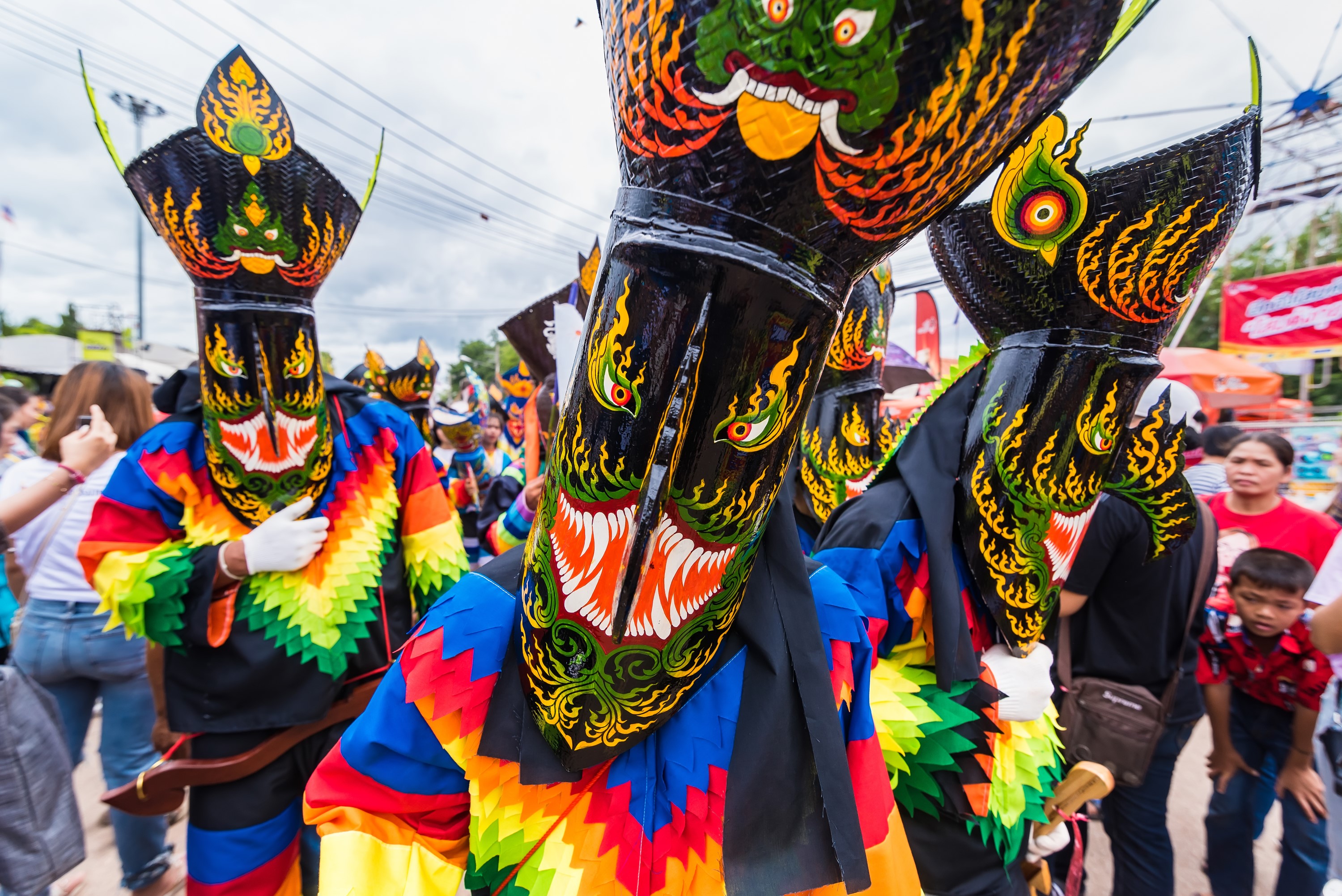
Originally, Phi Ta Khon masks weren't as colorful as they are today. Villagers typically used black soot to decorate them, making them look scary. As for the costumes, locals would adapt recycled fabrics like old monk's robes or mosquito nets, cutting and sewing them to match the handmade masks.
There's also another interesting gimmick: anyone making a Phi Ta Khon mask must do so secretly out of sight from others. This maintains its mystique, wards off bad luck, preserves its unique character, and builds an exciting atmosphere for the upcoming festival.
As time passed, the masks, once made from sticky rice steamers and old cloth, became more vibrant. Paper, resin, and watercolors were incorporated, along with striking designs that are now the distinct hallmark of this famous festival in Dan Sai District and Loei Province today.
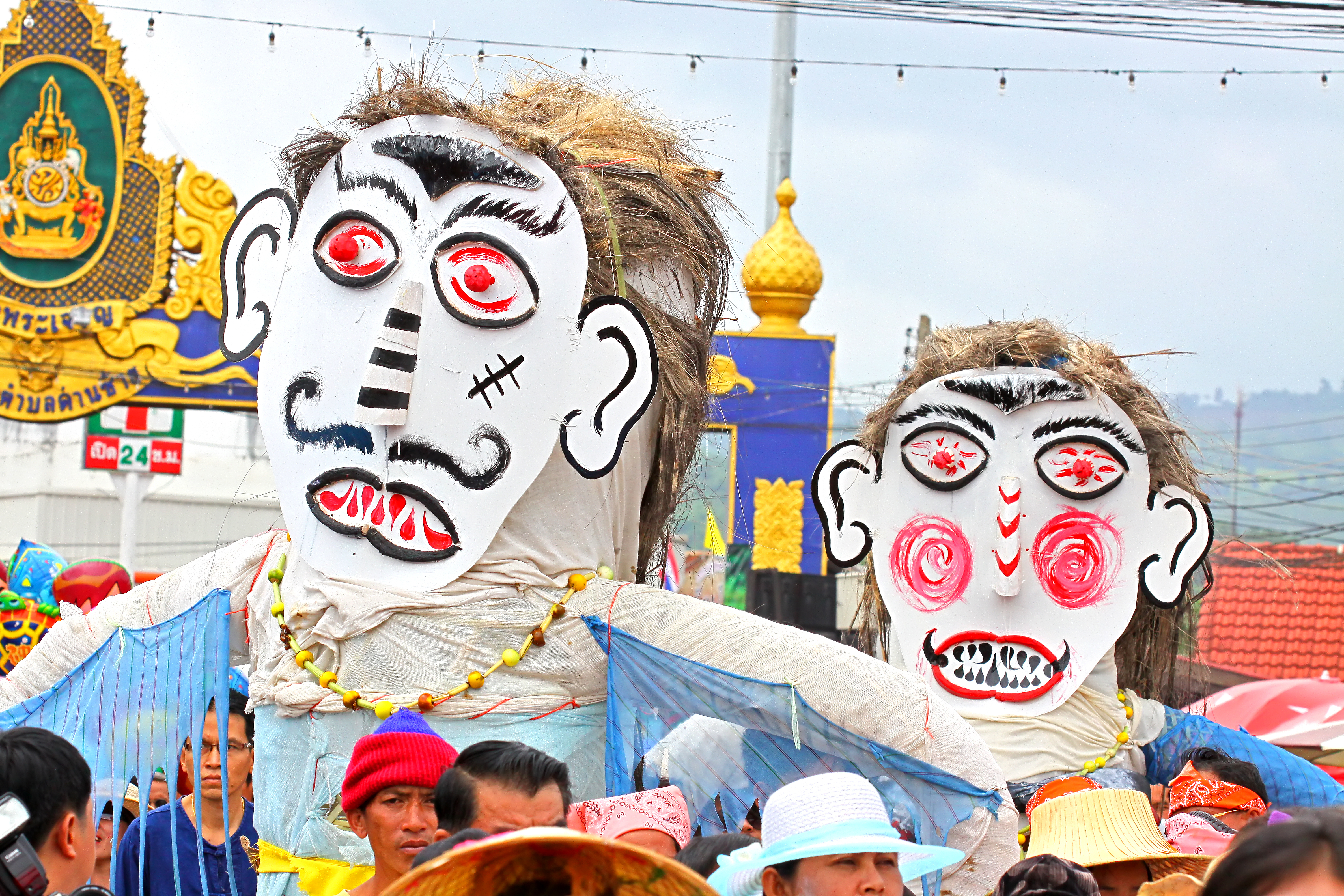
Currently, Phi Ta Khon masks are broadly categorized into two types: Phi Ta Khon Yai (Large Phi Ta Khon) and Phi Ta Khon Lek (Small Phi Ta Khon) each conveying different meanings and having distinct origins.
Phi Ta Khon Yai masks are crafted in the form of one male and one female figure. The responsibility for making these large masks traditionally falls to specific affluent families in Dan Sai District, who have continuously undertaken this task for generations. Before beginning, a "wai kru" (teacher-honoring ceremony) must be performed, involving flowers, incense, and candles, to offer apologies and seek permission from sacred entities.
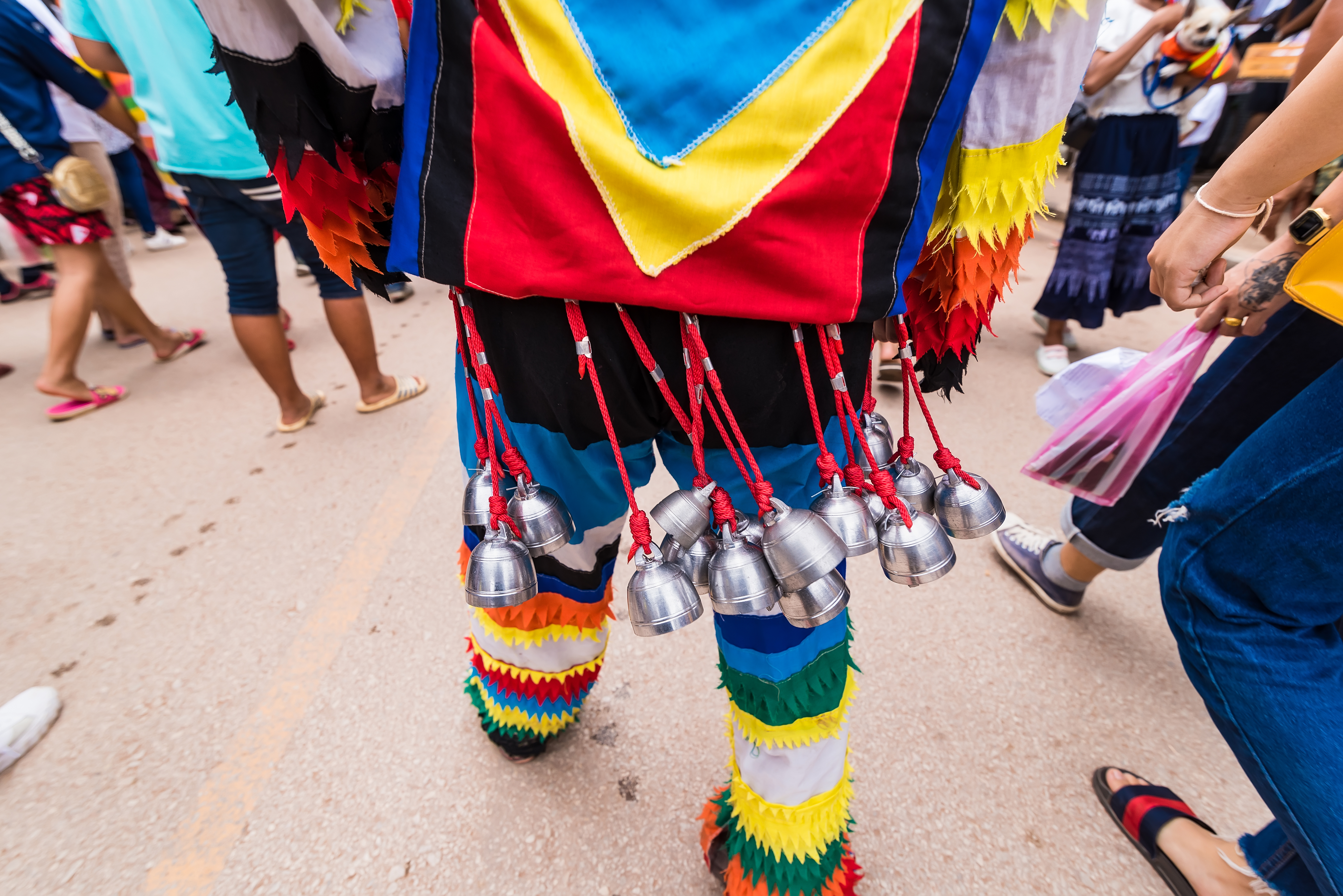
As for Phi Ta Khon Lek (Small Phi Ta Khon), these are the masks generally made by ordinary villagers who participate in the festival for fun. In addition to the masks, there's also "Mark Ka Laeng" a bell-like instrument similar to those hung around the necks of cattle or buffalo, which is tied around the waist. This adds sound and a lively rhythm to the festival, a key selling point of the Phi Ta Khon Festival to this day.
From all that's been discussed, you'll find that the Phi Ta Khon Festival serves as a clever stratagem that brings joy and unity to the local people, as well as expressing their shared beliefs. Above all, this festival offers many benefits beyond just preserving ancient traditions. It also promotes tourism, and it's not just Thais who are interested now. Every year, numerous foreigners come to be part of this festival, which is full of beliefs and fun in the unique style of our Northeastern Thai people.
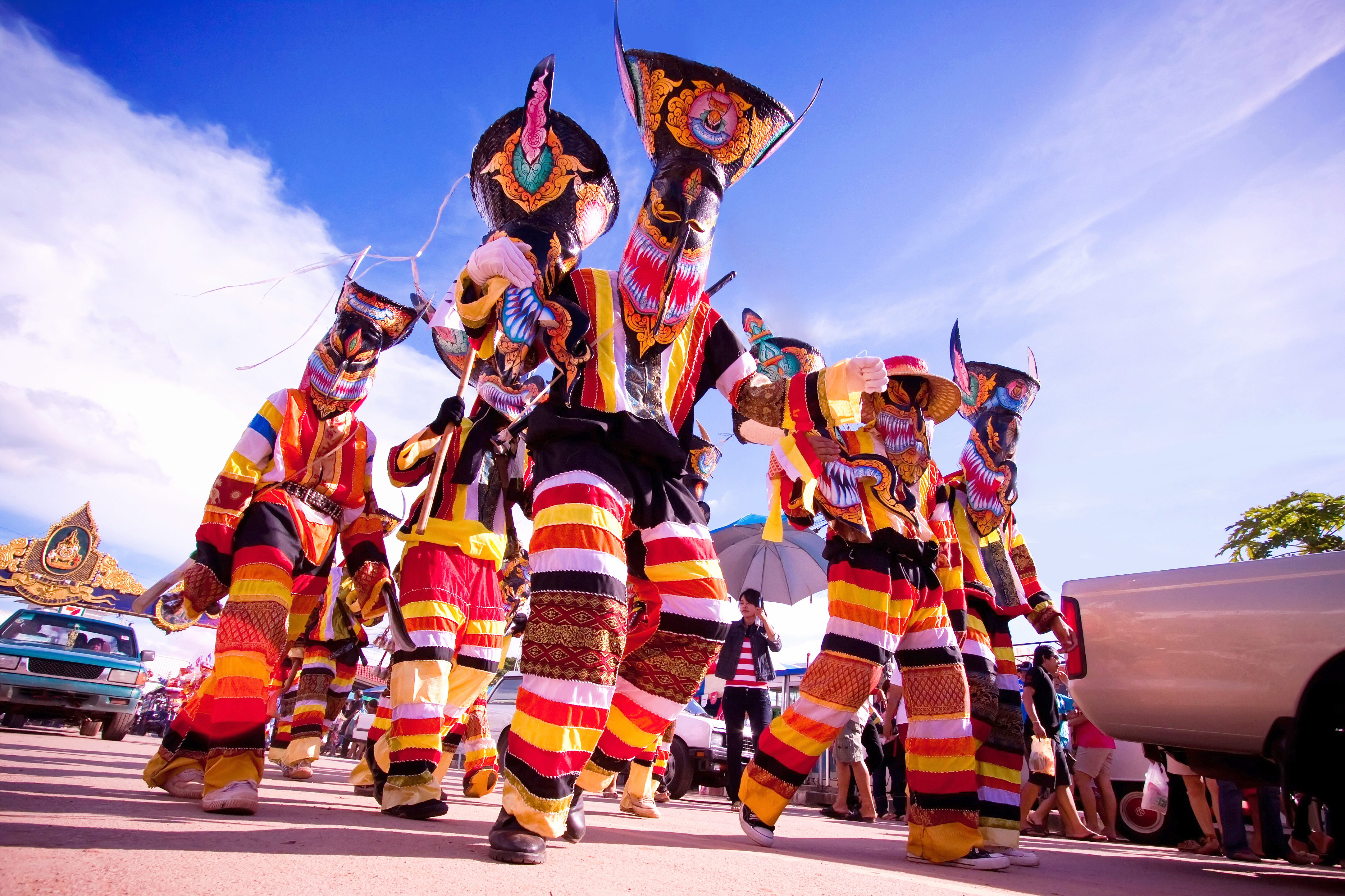
Amazing Thailand has already captured the vibrant atmosphere of this year's Phi Ta Khon Festival for you. If you missed this annual event, don't worry! The Phi Ta Khon Festival is held every June in Dan Sai District, Loei Province, and it's truly an important Thai festival that tourists shouldn't miss.


